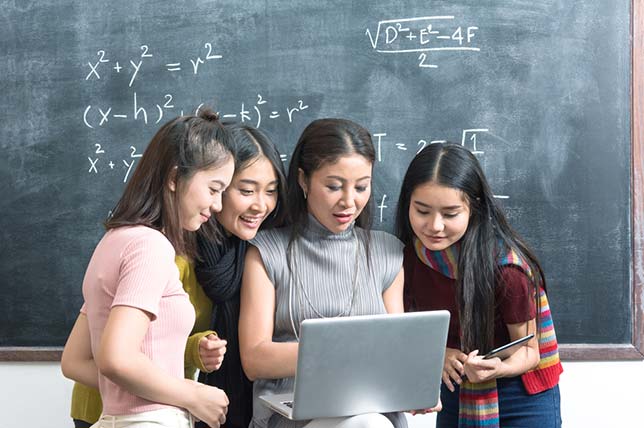Gender Gap among Math High Achievers Evident by Grade 9, Just Gets Wider
- By Dian Schaffhauser
- 09/13/18

Every year several hundred thousand students from 6,000 schools participate in the American Mathematics Competitions (AMC), a program by the Mathematical Association of America that helps teachers identify talent in math among their students and to foster a love of math. The results of that "friendly" competition provided the data for a research project to understand the dynamics of the gender gap in high school math achievement. (AMC is also delivered in middle school, but for this project, the focus was on students in secondary schools.) According to a working paper recently published by the National Bureau of Economic Research, "a clear gender gap" among high-achieving students has already shown up by ninth grade, and it just widens through the remainder of the high school years.
The AMC contests are 25-question, multiple-choice tests designed to identify students working at high performance levels. Those who fall into that category tend to take the test year over year through their high school career. The AMC contest has multiple stages. By hitting a threshold score, students move into additional exams. Researchers Glenn Ellison, a professor in MIT's Department of Economics, and Ashley Swanson, an assistant professor of healthcare management in the Wharton School at the University of Pennsylvania, examined AMC data from 1999 to 2007.
They found that girls made up an ever-declining share of the top achievers with every passing year of high school. For example, among the top 5,000 students, female students made up 30.5 percent in grade 9, 26 percent in grade 10, 24 percent in grade 11 and 22 percent in grade 12. By grade 12, females made up just 7 percent of the top 100 students. The largest change occurred between grades 9 and 10, but it was a "fairly steady process clearly visible in every year."
The research also discovered that high-achieving girls improved by less on average from year to year than boys did with similar performance levels in the first year.
The researchers cautioned that the "widening gender gap" was "clearly a multifaceted phenomenon with several contributing factors." For instance, there could be gender differences in the decision to participate in competitions in the first place. And the "discouragement effect" could play a role. The report cited a 2012 study that found female participants in a TV game show tended to earn less than male contestants and to "exit the game prematurely at a faster rate." Other research found that while men who lose a contest react by "seeking greater challenges," women will react by "ceasing to compete." While many male students may respond to disappointment by "redoubling" their efforts next time, female students may more commonly just opt out of participation in future years. Girls are more likely than boys to cease participating in the AMCs when they experience a disappointing outcome; and even those girls with scores just below the cutoff will be 5 percentage points less likely to participate in the following year than girls who barely hit it.
The complete results of the working paper in digital form are available for $5 on the NBER website.
About the Author
Dian Schaffhauser is a former senior contributing editor for 1105 Media's education publications THE Journal, Campus Technology and Spaces4Learning.